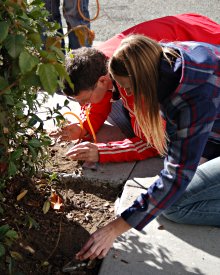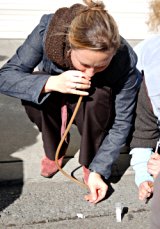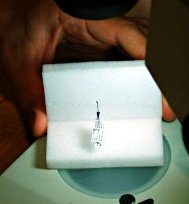
As the winter drags on, I often think fondly of a chilly Saturday in December where I found myself in a small alleyway in San Francisco trying to suck elusive ants into a rubber tube called a pooter. What was the point of this seemingly silly endeavor? I was leading a QUEST educator training with the California Academy of Sciences (one of the more fun parts of my job).
I was first introduced to the pooter, an insect catching device, last July at the California Academy of Sciences Nature Journaling workshop in the Trinity Alps and little did I know where it would lead.
The Nature Journaling workshop blended sketching and watercolor techniques with information about the natural area in which we camped. In addition to discovering I could actually be artistic (not one of my strong suits in the past) and falling in love with vegan cashew chili (I’m a big fan of meat), the highlight for me was learning how to catch small insects by sucking them into a vial at the end of a long rubber tube.
This contraption, which includes a small piece of gauze between the vial and the rubber tubing, so you don’t suck the insect all the way into your lungs, is the aforementioned pooter. By the end of the workshop, we had planned a joint educator workshop using QUEST media about invasive species with the hands-on ant collecting activities from the Bay Area Ant Survey and the California Academy of Sciences.

Fast forward four months. In early December, 29 Bay Area science educators gathered at the California Academy of Sciences to learn about Bay Area invasive species. We started the day off with QUEST’s television story San Francisco Bay Invaders, moved to some discussion about how to help our students become “media savvy” in the 21st century, and then it was time for the pooters.

